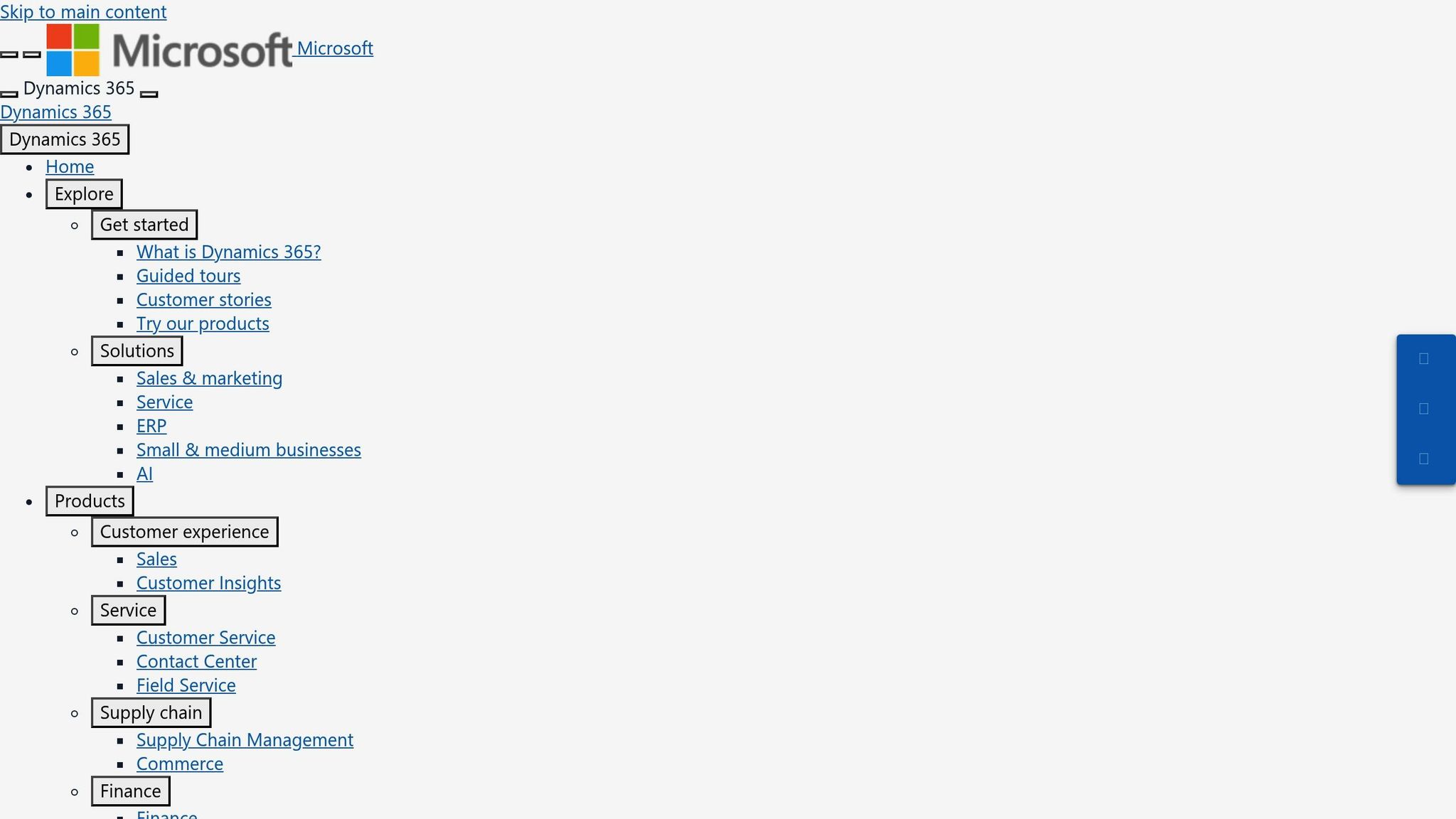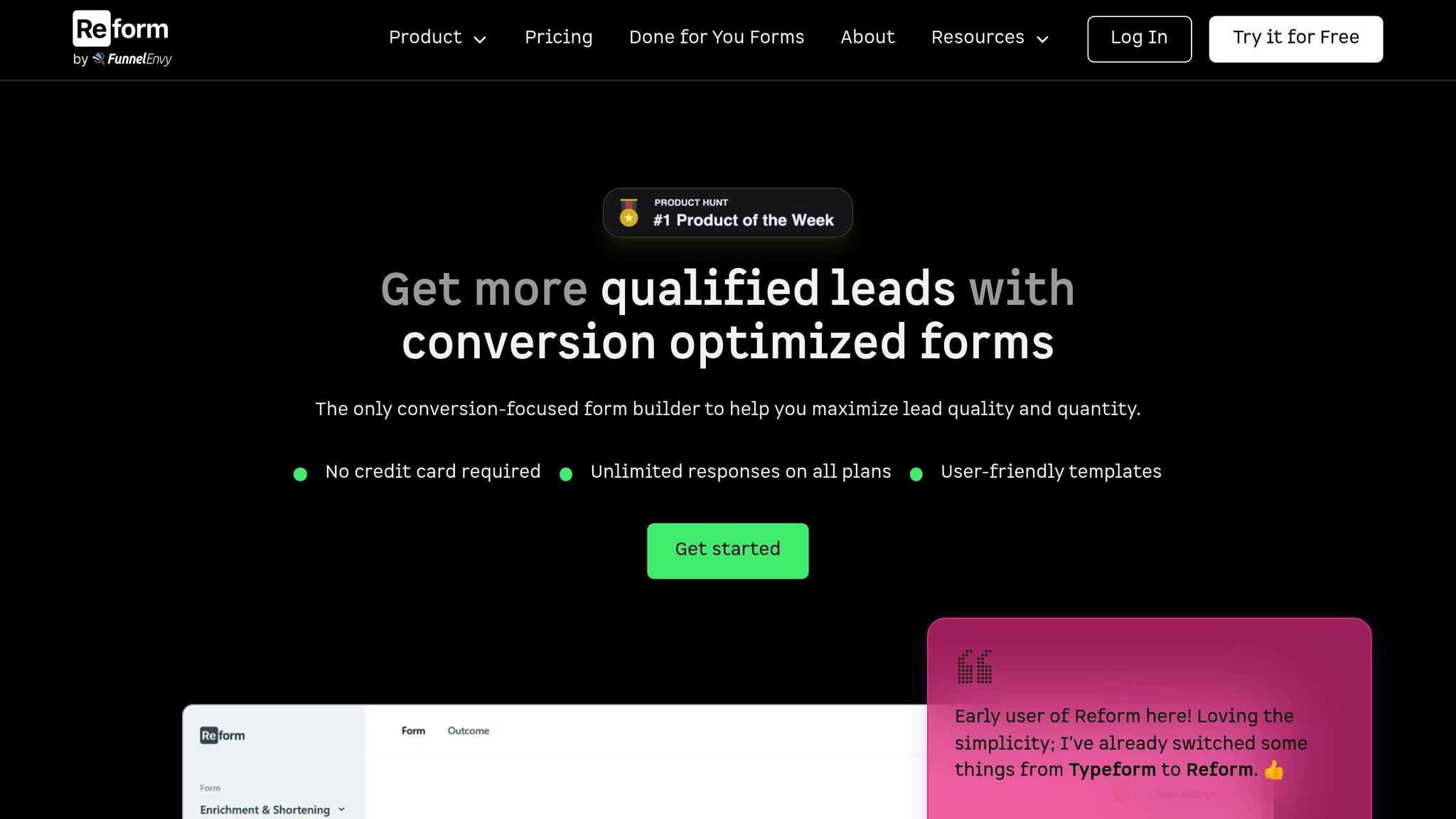How Real-Time Data Improves Marketing Automation

Real-time data transforms marketing automation by enabling instant responses to customer behavior. Unlike outdated batch processing, real-time analytics continuously processes data as it arrives, allowing marketers to:
- Adjust campaigns on the fly to improve performance and reduce wasted spend.
- Deliver personalized experiences at scale, boosting engagement and customer satisfaction.
- Streamline operations by automating workflows and reducing manual tasks.
Key stats:
- 60% of business leaders report higher customer retention with real-time analytics.
- 71% of tech leaders link real-time data to revenue growth.
- By 2025, 30% of all data is expected to be processed in real time.
Real-time insights empower businesses to optimize ads, emails, and customer journeys in the moment, driving better results and faster decision-making.
Dynamics 365 Marketing Tutorial (Real Time Marketing / Customer Insights Journeys)

Key Benefits of Real-Time Data in Marketing Automation
Real-time data has revolutionized marketing automation, shifting it from a reactive tool to a proactive powerhouse. By leveraging real-time insights, businesses can achieve better campaign results, enhance customer experiences, and improve operational processes.
Faster Campaign Adjustments
With real-time data, marketers can quickly spot underperforming elements in their campaigns - whether it’s an email subject line, ad creative, landing page, or audience targeting. This allows for immediate adjustments, reducing wasted ad spend and ensuring budgets are used effectively. The ability to reallocate resources or refine strategies on the fly helps protect investments while seizing timely opportunities. Regularly tracking key metrics and running iterative tests further improves campaign outcomes, keeping strategies sharp and responsive.
Personalization at Scale
Real-time data makes it possible to deliver tailored experiences to large audiences without sacrificing the personal touch. By integrating data like purchase history, browsing behavior, and product interactions, marketers can customize content to match individual preferences. This includes AI-driven content suggestions and optimizing communication timing and channels.
Here are some standout examples:
- Dutch Bros: In May 2025, Dutch Bros implemented a personalized messaging strategy across SMS, email, push notifications, and app channels. This effort led to a 230% ROI boost from CRM campaigns and a 31% reduction in costs.
- Equinox: In September 2022, Equinox revamped its app homepage into a dynamic, personalized interface. This resulted in a 150% jump in member engagement both in-club and online, with test campaigns showing a 21% increase in engagement compared to control groups.
- Life360: In May 2025, Life360’s "Year in Review" campaign sent nearly 20 million unique in-app messages tailored to user preferences. The campaign achieved a 105% increase in annual trials, a 15-fold rise in social shares, and a 20% improvement in personalized experiences over the year.
The importance of personalization is well-documented: 71% of consumers expect tailored interactions, and 76% report frustration with generic content. Brands prioritizing personalization often see a 10–20% increase in revenue.
Better Operational Efficiency
Real-time data automation reduces the need for manual tasks, enabling marketing teams to respond instantly to customer actions while focusing on strategic and creative work. This streamlined approach enhances productivity and allows teams to do more with their time.
"Data automation improves workplace efficiency through automated workflows. These automated workflows free up employees for more creative, strategic work. This means you and your team have time to do more - and do it better."
- Team Braze
The results speak for themselves: companies using marketing automation often see up to a 14% boost in sales productivity, a 35% increase in conversion rates through automated lead nurturing, and a 20% reduction in the average sales cycle.
Real-world examples highlight the impact of real-time automation:
- MoneySuperMarket: Integrated its content recommendation engine with data warehousing systems, leading to a 25% rise in conversions and increasing send rates from 500 to 25,000 per minute.
- Virgin Red: Consolidated multiple tools into a single platform, which improved email open rates by 45% and drove higher loyalty program conversions.
- Mon-Marché: Automated data import and activation processes to send personalized order reminders, resulting in a 43% increase in orders.
- Eco Grant UK: Used a custom chatbot to streamline lead generation, boosting eligible leads by 312%.
These examples underline how real-time automation allows marketing teams to stay agile, quickly adapt to customer behaviors, and optimize every interaction as it happens.
How to Set Up Real-Time Data Monitoring in Marketing Automation
Real-time data can transform your marketing automation into a system that reacts to customer behavior as it happens. Here's how to set it up effectively.
Finding Critical Data Touchpoints
Start by identifying where your customers interact with your brand. Marketing automation tools gather data from all parts of the customer journey - website visits, social media engagement, and shopping habits are just a few examples. Recognizing these interactions helps you create smarter campaigns and make better decisions.
Touchpoints can be divided into two types: direct and indirect. Direct touchpoints involve real-time customer interactions, like a live chat or a purchase. Indirect touchpoints shape customer perceptions before any direct engagement, such as reading reviews or seeing ads. To fully understand your audience, your monitoring strategy should cover both.
The most useful types of data to monitor include:
- Demographic details
- Behavioral trends
- Customer preferences
- Purchase history
- Engagement metrics
- Feedback and campaign responses
A great example is Nars Cosmetics. In 2024, the brand used customer personas to revamp its digital marketing. They identified a group of trend-savvy, tech-forward consumers who craved immersive digital experiences. To cater to this segment, Nars introduced augmented reality (AR) try-ons and interactive gaming features. These became standout touchpoints, creating a more engaging and personalized customer journey.
Mapping your customer journey is crucial. Identify high-value touchpoints from awareness to retention. Figure out where your audience spends their time, when they’re most active, and how they engage with your content. This analysis can also reveal pain points, behavioral trends, and areas for improvement. Addressing these early can prevent small issues from turning into bigger problems, like customer churn.
Regularly auditing your data is another essential step. This ensures accuracy and keeps your campaigns running smoothly. Once you've identified your key touchpoints, the next step is integrating these data sources into your automation tools.
Connecting Data with Automation Tools
After pinpointing key touchpoints, connect them to your automation platform. This integration lets you pull data from multiple sources, automate workflows, and create a seamless customer experience.
Here’s how this works:
- Map out customer journeys.
- Pull data from tools like analytics platforms and CRMs.
- Set triggers for events, such as abandoned carts or website visits.
- Automate workflows, like sending personalized emails or launching retargeting ads.
Integration often involves tools like APIs, data warehouses, and cloud platforms to ensure everything works together smoothly.
For instance, Atmos Funded saw a 22% boost in customer retention after analyzing behavior flow reports and tweaking their automation. They noticed users often dropped off after the third email in their welcome series. Adjusting the timing and content of these emails significantly improved engagement.
"Data doesn't just inform - it directs." - Atmos Funded
To make the most of your automation platform, ensure it’s connected to other business systems. This allows instant access to updated data, enabling real-time responses to customer actions. Standardizing data entry processes and using validation tools can also help maintain accuracy.
Once your tools are connected, the next step is setting up dashboards and alerts to monitor performance in real time.
Setting Up Real-Time Dashboards and Alerts
Real-time dashboards and alerts are the backbone of your monitoring system. They provide a clear view of performance and allow you to act quickly when adjustments are needed. Focus on key performance indicators (KPIs) that align with your goals, and set up custom alerts for specific events or thresholds.
Dashboards should process data instantly, enabling fast decision-making. Use these tools to track trends, receive alerts, and turn insights into action. For example, if a campaign underperforms, you can reallocate the budget or tweak the strategy immediately.
Real-time alerts are particularly useful for tracking critical metrics like traffic spikes or sudden drops. These alerts can highlight underperforming areas and guide timely adjustments to campaigns and channels. Real-time data also allows for testing elements like email subject lines, ad designs, landing pages, and audience segments. Quick adjustments can help you avoid wasting time and resources.
Predictive analytics adds another layer by forecasting trends and helping allocate budgets more effectively. For example, monitoring website health and using A/B testing with real-time data can optimize campaigns and boost ROI.
"Real-time analytics is the practice of capturing, processing, and evaluating data coming in from across various channels and inputs, in order to better make decisions." - Taboola.com
Real-world examples show the power of dashboards. An e-commerce brand used past holiday sales data to target ads featuring popular products, increasing sales by 30%. Similarly, an online fitness platform adjusted campaign times based on peak user activity, leading to a 45% increase in engagement.
Educate your team on maintaining data quality and best practices. With 76% of consumers saying they’re more likely to buy from brands that personalize their experiences, real-time engagement is no longer optional - it’s essential. Your monitoring system should support this level of personalization while ensuring data accuracy and reliability.
sbb-itb-5f36581
Using Reform to Improve Lead Conversion with Real-Time Data

Reform is a form builder designed to transform how businesses capture and convert leads. By focusing on real-time insights, it goes beyond basic data collection to emphasize lead quality. With instant feedback on user behavior, marketers can make smarter, faster decisions that directly boost conversion rates. Reform continuously tracks interactions, allowing for quick adjustments to improve form performance. Below, we’ll dive into its standout features and practical examples that showcase its impact on lead conversion.
Core Features of Reform for Real-Time Data
- Real-time Analytics: Get instant feedback on how users interact with forms, enabling quick tweaks and ongoing improvements.
- Conditional Routing: Use real-time data to tailor the user experience, directing individuals to the most relevant follow-up questions.
- Lead Enrichment: Automatically pre-fill known details to reduce effort for users and speed up form completion.
- Email Validation: Verify email addresses as they’re entered, cutting down on bounce rates and ensuring accurate contact information.
- Abandoned Submission Tracking: Capture partial responses from users who leave forms incomplete, so no lead is left behind.
- Multi-step Forms: Break complex forms into smaller, easier sections, making it possible to track and optimize conversions at every stage.
Practical Use Cases for Reform
Reform’s features open up a range of possibilities for improving lead conversion. For example, real-time analytics can instantly qualify high-value leads and route them into priority workflows. If a user abandons a form, those partial submissions can trigger targeted follow-ups based on the information already provided. Reform also supports A/B testing, offering the potential to boost conversion rates by as much as 50%. Integration with marketing tools ensures seamless follow-up: form submissions can immediately trigger email sequences, update CRM records, or notify sales teams. These capabilities ensure no lead is overlooked.
"Reform is what Typeform should have been: clean, native-feeling forms that are quick and easy to spin up. Reform does the job without a bunch of ceremony."
– Derrick Reimer, Founder, SavvyCal
Feature Comparison Table: Key Benefits
| Feature | Benefit | Real-Time Impact |
|---|---|---|
| Analytics | Instant feedback for rapid improvements | Quickly identify and address drop-off points |
| Conditional Routing | Personalized lead nurturing | Immediately routes high-value leads to priority flows |
| Lead Enrichment | Pre-fills known information automatically | Reduces user effort and boosts completion rates |
| Email Validation | Verifies emails as users type | Ensures clean, accurate contact data |
| Abandoned Submissions | Captures incomplete responses | Recovers leads that might otherwise be lost |
| Multi-step Forms | Simplifies long forms into smaller steps | Tracks and optimizes conversion rates at each stage |
Businesses that actively monitor and refine their lead funnels can achieve a 53% higher conversion rate from lead to opportunity. Reform’s real-time tools give marketers the visibility they need to pinpoint and fix bottlenecks fast. Some strategies using Reform have reportedly delivered a 215% increase in qualified leads for B2B and SaaS companies.
Reform offers two pricing tiers: the Basic Plan at $15/month and the Pro Plan at $35/month. The Pro Plan, tailored for businesses aiming to maximize real-time data, includes extras like team access, file uploads, and advanced integrations. With these affordable options, businesses of all sizes can capitalize on Reform’s ability to supercharge their lead conversion efforts.
Measuring and Improving Marketing Automation with Real-Time Data
Real-time data has the power to turn marketing automation into a responsive and dynamic system. The trick lies in knowing which metrics matter most, how to test effectively, and when to tweak your approach. Continuous monitoring and testing refine your efforts, ensuring long-term success. Interestingly, about 50% of marketers using automation struggle to measure its effectiveness. With the right tools and strategies, though, you can transform raw data into actionable insights that truly make a difference.
Key Metrics to Monitor in Real-Time
When it comes to marketing automation, key metrics generally fall into four categories: engagement, conversion, customer, and value. Here’s a closer look at each:
- Engagement metrics show how your audience interacts with your content. Open rates reveal if your subject lines grab attention, click-through rates (CTR) measure message resonance, and bounce rates flag visitors who leave immediately. Metrics like time spent on your site and social media engagement (likes, shares, comments) provide a fuller picture of audience interest.
- Conversion metrics track business-critical actions, such as form completions, lead scores, and overall conversion rates - essentially, how many people take the steps you want them to.
- Customer metrics dive deeper into the long-term impact of your efforts. Metrics like customer acquisition cost (CAC), customer lifetime value (CLV), and retention rates help gauge the sustainability of your strategies.
- Value metrics tie your activities directly to revenue. Key indicators include total revenue generated, return on investment (ROI), and repeat customer revenue.
Sean Donahue, Director of Email Marketing at Power Digital, highlights the importance of real-time monitoring:
"We review the data, and the data speaks to us."
He continues:
"Engagement tells us everything we need to know. If we're getting too close to the sun with personalization, that is absolutely going to reflect in the data and we'll know to back off."
| Metric Category | Key Metrics | Why It Matters |
|---|---|---|
| Engagement | Open Rate, CTR, Bounce Rate, Time on Site | Reflects how well your content connects with the audience |
| Conversion | Form Completion Rate, Lead Score, Conversion Rate | Tracks actions that drive business growth |
| Customer | CAC, CLV, Retention Rate | Shows the long-term relationship value |
| Value | Revenue Generated, ROI, Repeat Revenue | Links activities to financial performance |
Tracking these metrics allows you to fine-tune campaigns through targeted testing and adjustments.
A/B Testing and Continuous Improvement
A/B testing, combined with real-time data, creates a feedback loop that sharpens your campaigns. Real-time tracking tools let you test elements like subject lines, call-to-action buttons, or landing page layouts, and quickly shift focus to the winning variations. Testing one element at a time ensures you can pinpoint what works best.
Dynamic audience segmentation also plays a huge role. For example, tailoring campaigns based on behaviors like cart abandonment or email engagement can boost revenue by as much as 760%. Setting up alerts for critical metrics means you’ll be notified immediately when something needs attention - whether to address a problem or seize an opportunity.
Email marketing tools like Klaviyo and Mailchimp take this a step further, offering real-time triggers that let you adjust campaigns without delay. By acting on test results, you can keep your campaigns aligned with audience preferences and emerging trends.
Making Real-Time Campaign Adjustments
Adjusting campaigns in real time requires a methodical approach. You need to quickly spot trends, identify outliers, and make changes while your campaigns are still live. For instance, reallocating ad budgets to high-performing placements or keywords can make a big difference.
Real-time insights also enable immediate retargeting. You can focus on users who’ve shown interest and tailor messages to reflect current trends. By combining predictive analytics with real-time data, you can forecast behavior and make proactive decisions.
The results speak for themselves. 80% of marketers using automation report increased leads and conversions, and businesses see a 14.5% boost in sales productivity. On average, companies earn $5.44 for every $1 invested in marketing automation within three years.
Centralized dashboards, like those offered by Google Data Studio or Power BI, provide a quick overview of performance. These tools make it easy to identify opportunities or issues across campaigns. Teams that align around real-time insights - often through shared dashboards and daily standups - can make faster, more confident decisions.
Conclusion: The Impact of Real-Time Data on Marketing Automation
Real-time data is reshaping marketing automation, turning it from a reactive tool into a responsive powerhouse. With real-time insights, marketers can make instant decisions that enhance efficiency and give them a competitive edge.
The numbers tell the story. A staggering 80% of consumers are more likely to buy when brands deliver personalized experiences. Case studies back this up, showing that real-time personalization can lead to over 100% increases in purchases and significant boosts in customer retention.
This shift is also reflected in the market's growth. The U.S. marketing automation sector hit $19.1 billion in 2024 and is projected to climb to $53.8 billion by 2033. Businesses are realizing that real-time insights allow for quick, confident decisions, cutting through uncertainty and delays. Whether it’s adjusting ad spend mid-campaign, implementing dynamic pricing, or flagging fraudulent transactions, real-time data empowers every decision with precise, up-to-date information.
The future looks even more dynamic with advancements like AI integration and edge computing. These technologies will reduce delays and make decision-making even more seamless. By combining real-time and predictive analytics, businesses can not only react to the present but also prepare for what’s ahead.
For those just starting to embrace real-time data, the advice is simple: begin with weekly reporting to identify what drives results, especially when entering new markets. Once you’ve got a handle on the basics, scaling up with real-time tools can take your efforts to the next level.
"I'd rather have it and not need it, than need it and not have it" - GreasyJeff, Reddit User
FAQs
What makes real-time data better than traditional batch processing in marketing automation?
Real-time data takes marketing to a whole new level by offering immediate insights, allowing marketers to react quickly to customer actions and shifts in the market. Unlike traditional batch processing, which collects and processes data at scheduled intervals, real-time data eliminates delays, enabling faster and more informed decision-making.
This constant flow of information means you can track customer behavior as it happens, adjust campaigns in real time, and deliver more personalized experiences. The result? Better engagement, higher conversion rates, and marketing automation workflows that are quicker and more responsive to changing needs.
How do companies use real-time data to improve their marketing campaigns?
Real-time data gives companies the ability to craft marketing campaigns that feel personal and resonate better with their audience. Take Amazon, for example - they use real-time data combined with AI to suggest products tailored to individual preferences, a strategy that has proven to significantly increase sales. Similarly, Starbucks taps into real-time insights to create customized promotions and offers, boosting customer engagement and strengthening loyalty.
With access to real-time data, businesses gain a clearer picture of customer behavior, streamline their processes, and make decisions based on hard data. This approach not only helps improve conversion rates but also enhances overall performance.
How can businesses set up real-time data monitoring to enhance their marketing automation?
To put real-time data monitoring into action, businesses need to begin with specific objectives that match their marketing goals. Select tools that not only allow real-time tracking but also work smoothly with your current marketing and CRM systems. Keep data accuracy in check by automating quality checks and setting up alerts for unusual patterns or important insights.
Make it a habit to analyze the data frequently. Doing so helps spot trends, tweak strategies on the fly, and boost campaign performance. With real-time insights, businesses can act faster, make smarter decisions, and fine-tune their marketing automation workflows to improve lead conversion rates.
Related posts
Get new content delivered straight to your inbox

The Response
Updates on the Reform platform, insights on optimizing conversion rates, and tips to craft forms that convert.
Drive real results with form optimizations
Tested across hundreds of experiments, our strategies deliver a 215% lift in qualified leads for B2B and SaaS companies.





